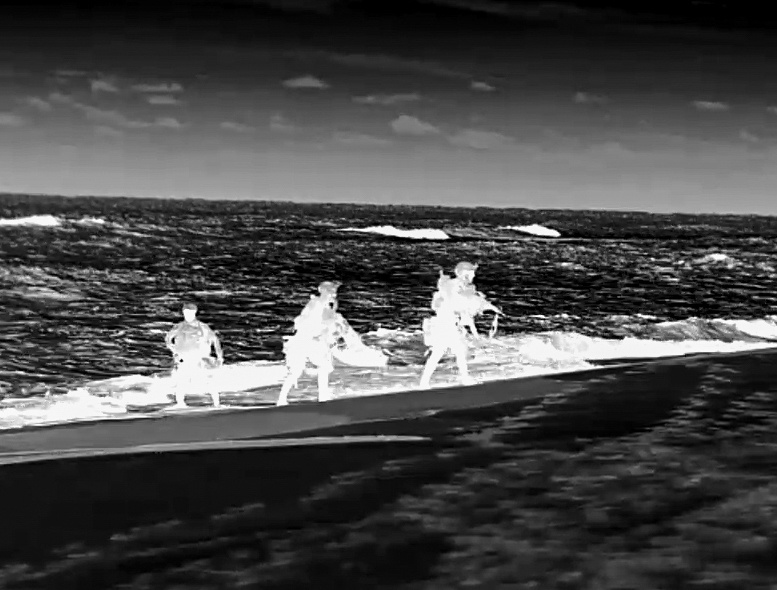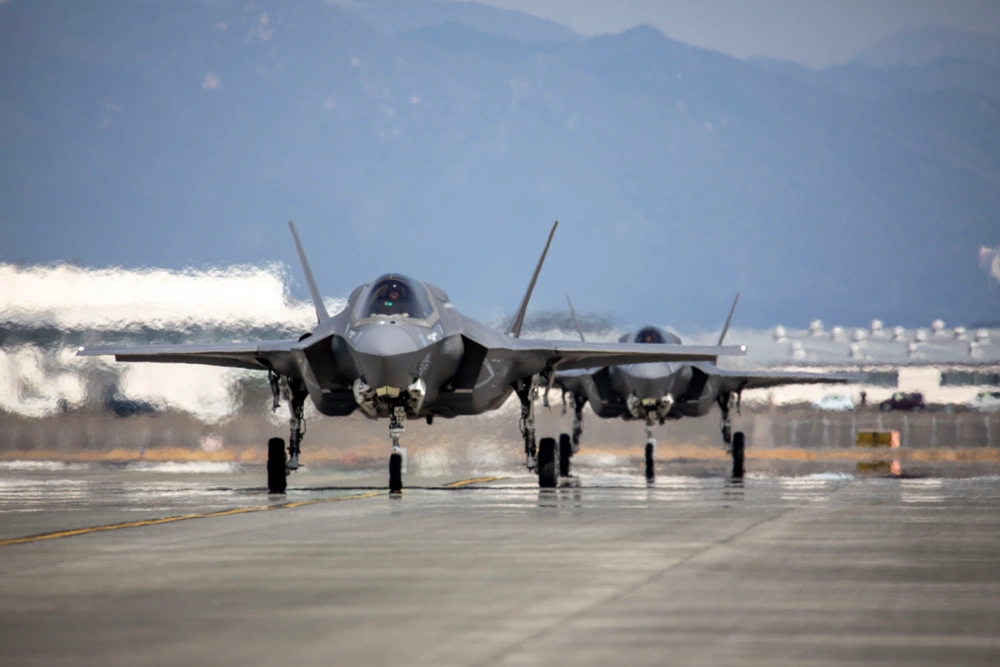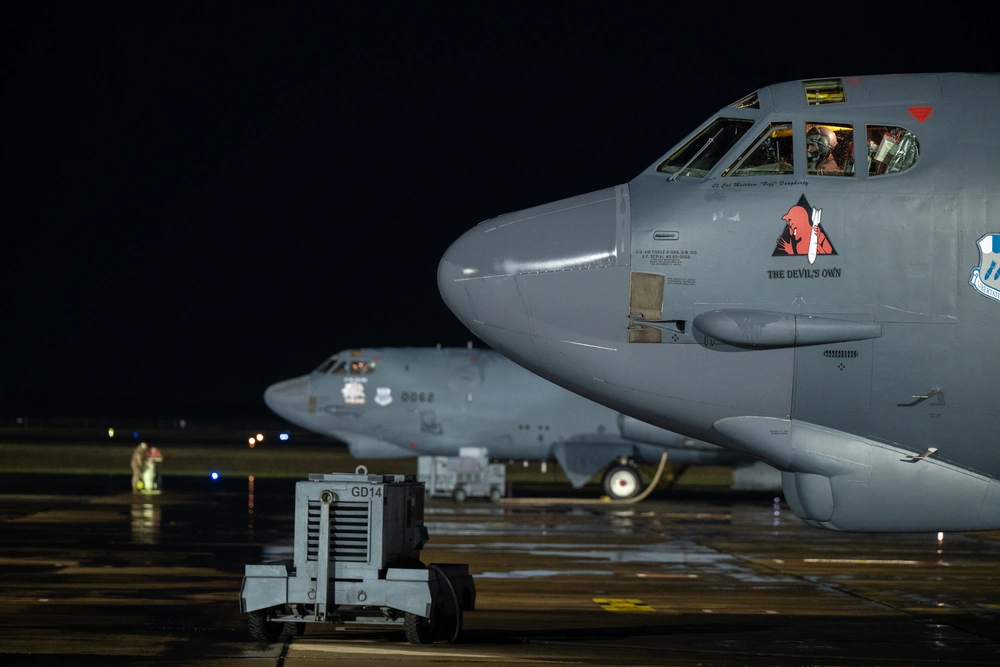In November 2024, U.S. Navy SEALs and Indian Navy Marine Commandos (MARCOS) participated in India in bilateral joint training maneuvers as part of Exercise SANGAM 2024 in India. Among the multiple capabilities the two units focused on was “over-the-beach” (OTB) operations.
OTB operations generally fall into the category of amphibious warfare, or military operations in which armed forces launch an attack from the ocean onto an enemy shore. The U.S. Marines are of course justly recognized as the preeminent lethal instrument used by the U.S. military to carry out large scale amphibious assaults. The U.S. Navy SEALs, however, also play a key role: reflecting their more surgical SOF mission set, the SEALs’ style of amphibious warfare is often more focused and clandestine. It is, in fact, one of the bread-and-butter capabilities of naval special warfare (NSW) units such as the SEALs.
OTB operations should probably more accurately be called “OTB insertions,” since their point is not simply making it from the sea onto the land, but rather, to accomplish some objective onshore. In other words, a SEAL unit will make its way from the safety and security of the water, via inserting over-the-beach, where they will then complete whatever mission they are assigned on the enemy’s terrain. The SEALs will then either return to the sea by traversing back over-the-beach, or exfiltrate from the area via some other means.
Phase 1: Maritime movement
The first part of any OTB operation is by definition a movement from an uncontested, neutral, or “friendly” maritime area to a targeted enemy shoreline. This movement can be carried out in a number of ways, including via a “duck” drop of SEALs and rubber boats from a helicopter, a free fall drop of a SEAL or SWCC unit with their rigid hull boats, a launch of SEALs and boats from a naval vessel far from the enemy shore, or a launch of SEALs and small NSW submersible craft from an undersea naval platform (submarine).
The chosen initial insertion technique is only limited by mission requirements, time constraints, capabilities, training, gear, and imagination.
Phase 2: Movement to the enemy coast

The second part of the operation is moving either over or under the surface of the water from the initial launch point far offshore to the point where the SEALs are close enough to the enemy shoreline to be theoretically detectable by a vigilant enemy force onshore. This move will be accomplished by a combat swim (if the distance permits), or in rubber boats, rigid hull boats, or via one of the other methods described above.
Depending on how well-defended and surveilled the enemy beach is, the SEALs will then prepare to make their move from the water over-the-beach onto the land.
Related: Navy SEALs and Delta Force commandos living together in the jungles of South America
Phase 3: Crossing from the maritime to land environment

Once they’ve arrived in the enemy’s littoral environment – the area of water and land interface found at any stretch of shoreline – the SEALs will then execute the movement from the safety of the water to the enemy’s shore. This final insertion technique will have been decided during pre-mission planning. The decision will have taken into account all of the intelligence gathered on how well-defended that particular stretch of beach appeared to be, and a mission commander can always call an audible just before going ashore. He can change up the plan mid-mission as long as some decision-point was pre-briefed and a mechanism put into place to communicate the desired change.
The SEALs will generally either motor ashore in the rubber boats, if the beach is remote enough to allow that method; they will paddle ashore in the boats if a quieter approach is required; or, for maximum stealth, they will swim ashore. In the latter case, the SEALs can leave members behind with the boats, to loiter them farther offshore once the SEALs depart.
Once the SEALs have made it ashore, they must then cache their boats and/or swimming and diving gear before they can carry out their land-based operation. It is simply a matter of making oneself “slick” enough to be able to shoot, move, and communicate during the direct action, reconnaissance, or other mission type being executed on land. Once that critical phase of the operation is complete, the SEALs are then ready to exfiltrate the area.
Phase 4: Exfiltration
Returning to friendly-held maritime territory upon completing their mission can be accomplished in any manner deemed operationally feasible.
If stealth is no longer a concern because the SEALs have noisily and violently attacked a fixed target, then perhaps evacuation helicopters can swoop in and grab the unit, getting them out of there quickly. If that is not doable because of air superiority concerns, then the SEALs might exfiltrate in the exact reverse manner in which they infiltrated. Again, mission requirements and operational thinking/planning are the limiting factors.
And that, in a nutshell, is the concept of over-the-beach operations.
Feature Image: East Coast-based U.S. Naval Special Warfare Operators (SEALs) conduct over the beach movement to simulate clandestine infiltration as part of a training scenario during Exercise Trident 23-2 in Virginia Beach, Virginia, November 14, 2022. (U.S. Navy photo by Petty Officer 1st Class Katie Cox)
Read more from Sandboxx News
- A 40-ship icebreaker armada: Could the White House’s vision come true?
- Quicksink kits could make it much cheaper to take out enemy ships
- Breaking out of a POW camp on a Russian helicopter
- The Air Force may not have enough aircraft ready to fight
- In 1980, the US Army feared Russian tanks were invincible










